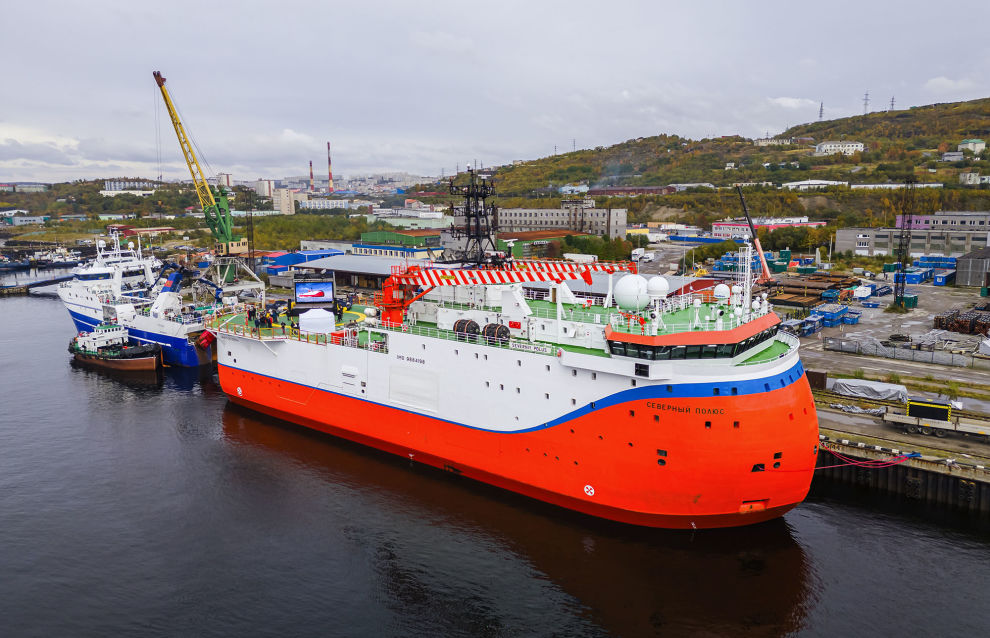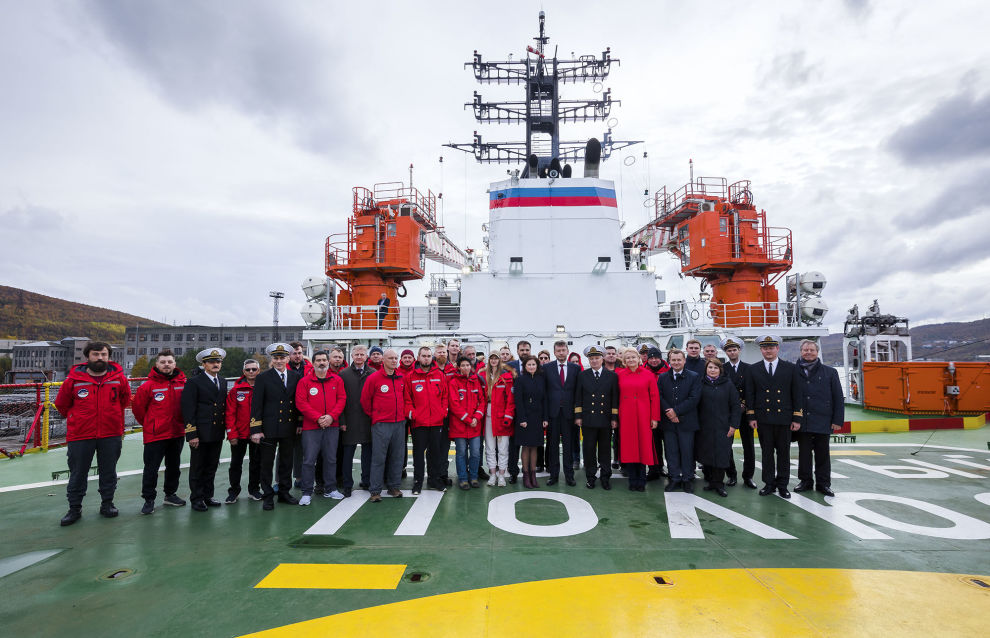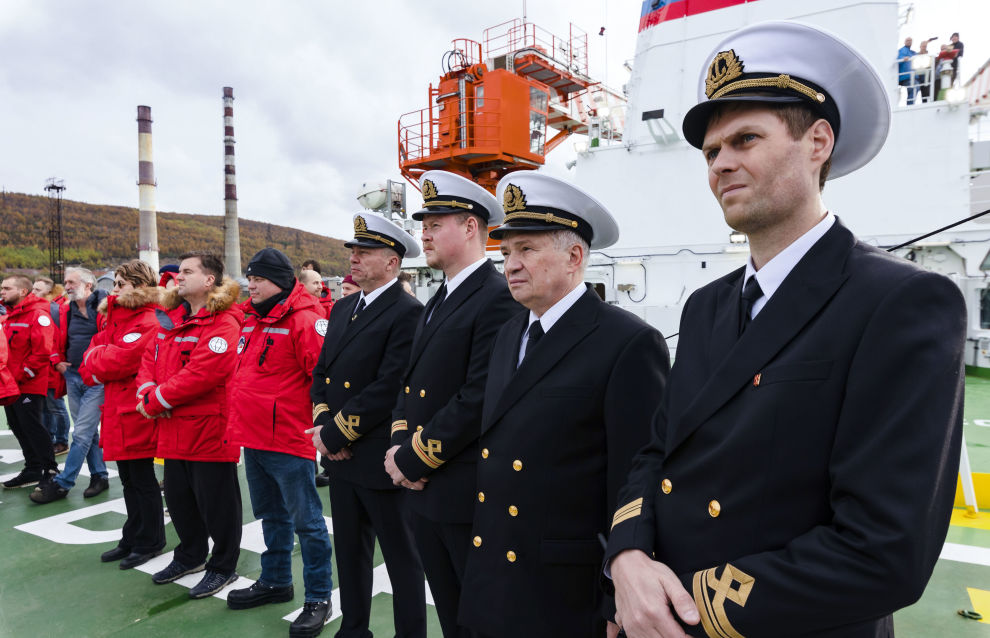|
VK0AW Станция Дэвис Антарктида
|
|
| R9CBA | Дата: Понедельник, 15.05.2023, 22:28 | Сообщение # 1 |
 Генералиссимус
Группа: Администраторы
Сообщений: 2338
Статус: Offline
| Аллан, VK0AW будет активен с австралийской станции Дэвис, IOTA AN - 016, Антарктида, с 14 февраля 2023.
Он будет работать на КВ диапазонах в течении года.
Последние DX споты VK0AW
QSL через EB7DX.
Адрес для QSL директ:
DAVID LIANEZ FERNANDEZ, P.O.BOX 163, 21080, HUELVA, Spai
|
| |
|
|
| R9CBA | Дата: Четверг, 18.05.2023, 17:30 | Сообщение # 2 |
 Генералиссимус
Группа: Администраторы
Сообщений: 2338
Статус: Offline
| RI41POL---ЛЕДОСТОЙКАЯ ПЛАТФОРМА «СЕВЕРНЫЙ ПОЛЮС» ЛСП «Северный полюс» – это судно специального назначения с функционалом научно-исследовательского центра, которое ЛСП «Северный полюс» – это судно специального назначения с функционалом научно-исследовательского центра, которое
выполняет круглогодичные комплексные исследования в высоких широтах.
|
| |
|
|
| R9CBA | Дата: Четверг, 18.05.2023, 17:30 | Сообщение # 3 |
 Генералиссимус
Группа: Администраторы
Сообщений: 2338
Статус: Offline
| Исследования природной среды Арктики на дрейфующем льду велись с 1937 года, когда впервые была организована дрейфующая экспедиция «Северный
полюс». Почти 80 лет на ледовых станциях изучали закономерности
формирования и развития природных процессов арктического региона. Однако
последствия изменений климата сделали работу на станциях крайне опасной
и в 2013 году из-за уменьшения толщины и прочности льда была завершена
работа последней дрейфующей станции «Северный полюс-40». Сейчас сведения об атмосферных, океанологических и ледовых условиях в Арктике поступают со спутников, но для точного понимания изменчивости Сейчас сведения об атмосферных, океанологических и ледовых условиях в Арктике поступают со спутников, но для точного понимания изменчивости
природной среды и моделирования динамики процессов необходимы наблюдения
insitu.Для восстановления регулярных исследований в Центральной Арктике был разработан проект ледостойкой самодвижущейся платформы «Северный полюс». ТАКТИКО-ТЕХНИЧЕСКИЕ ХАРАКТЕРИСТИКИ
Длина наибольшая 83,1 метра
Ширина наибольшая 22,5 метра
Осадка 8,6 метра
Водоизмещение 10373 тонны
Мощность головного двигателя 4 200 кВт
Скорость 10 узлов
Экипаж 17 человек
Научный персонал 31 человека
Класс ледового судна КМ Arc5 [1] AUT1-C HELIDECK-F Special purpose ship Платформа может без привлечения ледокола прибывать к месту проведения работ, дрейфовать в акватории Северного Ледовитого океана до двух лет и Платформа может без привлечения ледокола прибывать к месту проведения работ, дрейфовать в акватории Северного Ледовитого океана до двух лет и
возвращаться обратно в порт. Корпус судна способен выдерживать сжатия
многолетних льдов, что подтверждено модельными экспериментами в ледовом
бассейне ААНИИ. На борту обеспечены комфортные и безопасные условия
работы и проживания членов экспедиции, а на одной из палуб будет
оборудована вертолётная взлётно-посадочная площадка для приёма
вертолётов типа Ми-8 и Ми-38.На борту платформы размещены 15 научных лабораторий, которые охватывают весь комплекс изучения природной среды Арктики:- ионосферные наблюдения;
- геологические, химические и экологические исследования;
- исследования ледовых нагрузок и механики разрушения льда;
- исследования акустической томографии Арктического бассейна;
- исследования пограничного слоя и свободной атмосферы;
- магнитные и гравитационные исследования, и многое другое.
На расстоянии 400-500 метров от судна на дрейфующем льду планируется организакия мобильный полевой лагерь с лабораторными домиками, где
учёные будут выполнять исследования в природной среде.Подробнее: ЛСП "Северный полюс"Условиями распространения радиоволн и параметрами ионосферы в Арктике и Антарктике занимается отдел геофизики, в коллектив которого я и
влился. Подробнее: Отдел ГеофизикиСейчас разрабатывается сайт для отображения в реальном времени информации о распостранении радиоволн в Актическом регионе Российской
Федерации, положение овала полярных сияний и другой информации пока
можно посмотреть по адресу: http://www.geophys.aari.ru
|
| |
|
|
| R9CBA | Дата: Четверг, 18.05.2023, 17:31 | Сообщение # 4 |
 Генералиссимус
Группа: Администраторы
Сообщений: 2338
Статус: Offline
| RI41POL  Russia Russia
Login is required for additional detail.QSL: RN3RQ Page managed by RD1A Lookups: 99721
|
| |
|
|
| R9CBA | Дата: Четверг, 18.05.2023, 17:36 | Сообщение # 5 |
 Генералиссимус
Группа: Администраторы
Сообщений: 2338
Статус: Offline
| DPØGVN is a club station located at the German Antarctic Research Station "Neumayer III" in Dronning Maud Land, Antarctica. Find more on this outpost of global research at https://www.awi.de/en/expedition/stations/neumayer-station-iii.html. The call sign is regularly being activated by station personnel as well
as visitors. QSL cards (both for HF and QO-100 satellite contacts) are
available via DL5EBE, direct or via the DARC QSL bureau. Logs are also being uploaded to LotW irregularly.Current Webcam Picture: 
|
| |
|
|
| R9CBA | Дата: Четверг, 18.05.2023, 17:36 | Сообщение # 6 |
 Генералиссимус
Группа: Администраторы
Сообщений: 2338
Статус: Offline
| WSPR Beacon
The setup consists of a receiver and a transmitter which independently of each other operate in the WSPR
segments of the amateur radio HF bands.
The receiver is located at the "SpuSo" which is the station's air chemistry laboratory. SpuSo's main purpose is to
collect continuous, year-round and long-term data records for important
gaseous and particulate trace components of the troposphere. This
observatory is located about 1.5 km south of the main station where it
finds an outstandingly clean air environment.This is a perfect place for a receiver setup because the RF environment, too, is amazingly QRM-free with a noise
floor well 20, 30 or even more dB below of what we are used to in urban
areas.The receiver is a SDR built around three Red Pitaya (StemLAB 125-14 with 50 dB preamplifier). They permanently
observe all eleven WSPR band segments between 160m and 6m and upload the
spots to wsprnet.org. A BananaPi and a RaspberryPi single board computer take care of control tasks.A third Red Pitaya is currently monitoring the ever-increasing FT8 traffic on the amateur radio bands. Properly
decoded transmissions are reported to pskreporter.info.Please note: This is an unmanned FT8 receiver working fully automated. There no way to do a
two-way QSO with this installation. Calling DP0GVN on FT8 after being
spotted or requests for FT8 QSOs with DP0GVN are therefore pointless,
unfortunately. If you ever decode FT8 transmissions from DP0GVN, it
means that the HF transceiver in the radio room is in operation, so in
this case you might be able to work the station.The antenna setup consists of two two triangle-shaped horizontal loop antennas with 1:4 baluns. The lower
bands are received by an antenna with a circumference of 171 meters, the
upper bands use a shorter loop of 61 meters.The antennas are mounted on short masts about one to two meters above the ice shelf. This is not "above ground"
as the ice shelf is almost invisible to HF. You even can use antennas
lying flat on the ice to do HF QSOs! The real ground is about 200 meters
below as this is the average thickness of the ice shelf in this area.
Every year precipitation adds about one meter of snow and ice. Therefore
the antennas have to be reestablished regularly to not risk having them
covered by snow.
|
| |
|
|
| R9CBA | Дата: Четверг, 18.05.2023, 17:36 | Сообщение # 7 |
 Генералиссимус
Группа: Администраторы
Сообщений: 2338
Статус: Offline
|
The transmitter is located at the main station and is based on the TX design of the Charly-25 SDR project. Ats it heart is another Red Pitaya StemLAB 125-14 which feeds a
rock-solid PA designed to emit up to 20 watts RF. The Red Pitaya runs
Pavel Demin’s WSPR transceiver software. A PC Engines APU2 single board
computer is in charge of control and monitoring tasks. RF output, SWR
and system temperature are constantly monitored.The antenna is an approx.
20 meter long wire installed on the southern part of the station’s roof.
The wire runs in
North-South direction and is matched by a 1:9 Unun-type RF transformer.
While not being a high-performance antenna it is well suited for the
task because it is broad band and believed to be able to stand the
stress caused by the extreme Antarctic whether conditions.The transmitter
transmits on all WSPR segments between 160m and 6m on a round-robin
schedule. One complete
cycle takes 30 minutes. The bands between 40 and 17 meters are served
twice per cycle because these offer the best chances for the signal to
be heard. So these four bands are visited four times per hour, the other
bands twice per hour. The RF output is 5 watts on all bands.Update June 2020: On 2020-06-04 something in the RF transformer feeding the long wite antenna
broke causing the antenna to be unusable. Therefore we are currently
transmitting with the 5.5m vertical antenna which was already in use for
the project before 2020. This antenna offers a less favorable radiation
pattern when compared to the long wire, so expect somewhat degraded
reception opportunities. Maintenance work at the antenna can only take
place during Anarctic summer so that the repair will not be executed
before January 2021.
|
| |
|
|
| R9CBA | Дата: Четверг, 18.05.2023, 17:37 | Сообщение # 8 |
 Генералиссимус
Группа: Администраторы
Сообщений: 2338
Статус: Offline
|
This setup is a long-term project realized by the Technical University of Munich (TUM) and the Hochschule Bremen City University of Applied Sciences (HS in cooperation with the Alfred Wegener Institute Helmholtz-Zentrum für Polar- und Meeresforschung (AWI) and the German Amateur Radio Club (DARC). AWI operates the Neumayer Station III and provides logistics. DARC in cooperation with the Alfred Wegener Institute Helmholtz-Zentrum für Polar- und Meeresforschung (AWI) and the German Amateur Radio Club (DARC). AWI operates the Neumayer Station III and provides logistics. DARC
builds and maintains the receiver and transmitter setup.The project is
meant to run several years to gain long-term data on radio propagation
and spectrum
pollution in a very specific HF environment as the station is located
within the southern auroral oval. The setup will see changes in the
future -- we will keep you updated here. As the station is inaccessible
from the outside world for about eight months during south polar winter
modifications will usually happen during the Antarctic summer season
between November and February.- Short outline of the project’s history
May 2017: The project is formally accepted upon the result of a scientific review; it also
receives passes the mandatory assessment for impact on the Antarctic
environment by the German Federal Environment Office.January 2018: First deployment of receiver and transmitter. The receiver monitors eight
bands in parallel (switching the set of bands between daytime and
nighttime). The transmitter is a QRP Labs U3S transmitting on four bands
between 40 and 17 meters into a five meter long plain vertical radiator
on the station’s roof matched by a passive broadband matching network.
Transmission power is between 1 watt on 17 meters and 5 watts on 40
meters.January 2019: Installation of a commercial T2FD antenna on the station roof to extend the range of
transmission bands. The antenna got damaged in mid 2019 due to severe
weather.January 2020: Deployment of the second generation of receiver and transmitter. The receiver is now
capable of monitoring 16 bands in parallel. The transmitter can operate
on all HF bands plus 6 meters. The transmission antenna is now a 20
meter long wire matched by a 1:9 Unun RF transformer.June 2020: A damage in the feed of the long wire transmission antenna forces a switch to the less
performant vertical antenna. At about the same time the 171m loop
antenna at the RX ruptured but could be repaired two weeks later.Related Links
Current and previous activationsQO-100 satellite ground station by AMSAT-DL:
permanently installed, different operators (DC1TH, DK7DA, DM2KX, DL1TOG, DL5XL, HB9HCF)
|
| |
|
|
| R9CBA | Дата: Пятница, 19.05.2023, 07:08 | Сообщение # 9 |
 Генералиссимус
Группа: Администраторы
Сообщений: 2338
Статус: Offline
| Вчера после перерыва с 3 мая станция DP0GFN в эфире на частоте 18.102
|
| |
|
|
| R9CBA | Дата: Пятница, 19.05.2023, 19:11 | Сообщение # 10 |
 Генералиссимус
Группа: Администраторы
Сообщений: 2338
Статус: Offline
| http://www.hamradiotimeline.com/timeline/dxw_timeline_1_1.php
dx май))
|
| |
|
|











